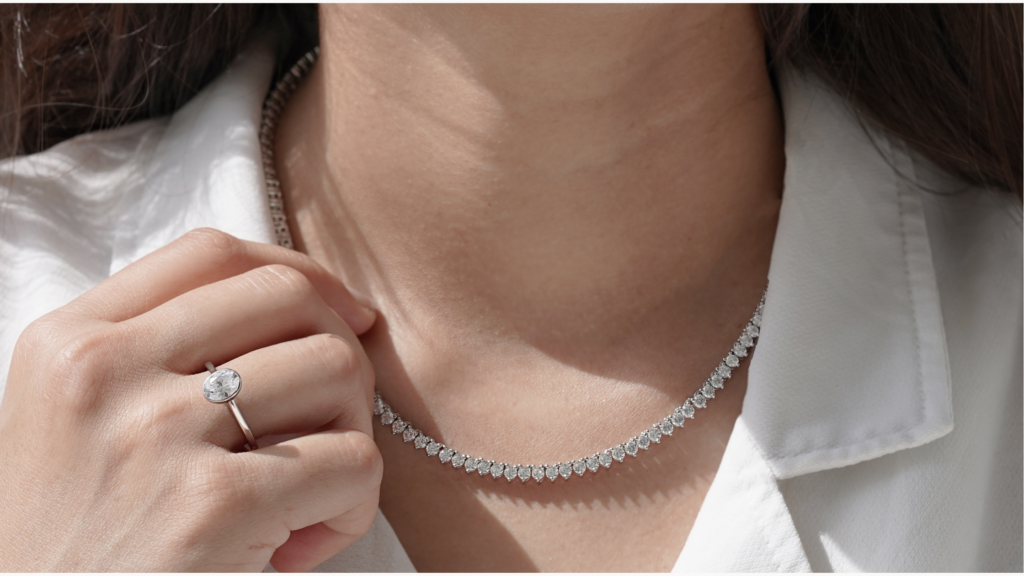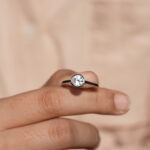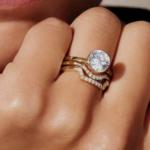The Role of 3D Rendering in Custom Jewelry Design

Introduction
Designing custom jewelry has forever been an art. It’s the fusion of creativity, craftsmanship, and personal expression. Historically, designers have used hand sketches to conceptualize ideas into reality, but with improving technology, the sector has caught up with 3D rendering as a mighty tool to close the imagination-to-reality gap. Not only does this enhance visualization but also makes the entire design process seamless. In this blog, we’ll explore how 3D rendering revolutionizes custom jewelry design and why it’s a game-changer for both designers and customers.
The Traditional Approach to Jewelry Design
Before the digital age, jewelry design was primarily based on hand-drawn sketches. While this method has its artistic charm, it comes with several challenges:
- Limited Visualization: Clients often struggle to envision the final product based on a 2D sketch.
- Communication Gaps: Misunderstanding between the customer and designer may result in dissatisfaction.
- Increased Likelihood of Mistakes: Changes and alterations become challenging once the piece goes into production.
Although traditional sketches are still used during the ideation process, current technology provides a more sophisticated and accurate method of jewelry design.
Introduction to 3D Rendering in Jewelry Design
3D rendering is a process that converts 2D sketches into realistic digital models, giving a realistic glimpse of the end product before it is made. Computer-aided design (CAD) software is instrumental in this process, enabling designers to design detailed, precise, and interactive jewelry models. With 3D rendering, jewelers are able to:
- Offer photorealistic previews of jewelry designs.
- Try out various materials, gemstones, and finishes virtually.
- Achieve precision and accuracy prior to production.
The Process of 3D Rendering in Jewelry Design
The process of transitioning from a concept to the finished jewelry piece goes through many critical steps:
1. Concept Development & Sketching
A concept is always the starting point for every unique jewelry design. Designers create inspiration, decipher client tastes, and draw a quick sketch of rough shapes to imagine the idea.
2. CAD Modeling
The sketch, when complete, is translated into a 3D computer-aided design model with dedicated CAD software. Designers at this stage get to:
- Set precise measurements and ratios.
- Confirm symmetrical and proportional designs.
- Alter easily before rendering.
3. Using Realistic Textures & Materials
For a photorealistic effect, designers add textures, materials, and light effects. Here, the design illustrates how the jewelry will appear in various light setups and situations.
4. Rendering the Final Design
The last step is to create high-definition images and 360° views of the custom jewelry. The detailed visualisation enables clients to accept the design confidently, saving them uncertainties prior to production.
Advantages of 3D Rendering for Custom Jewelry Design
There are many advantages that 3D rendering presents to designers as well as customers:
- Improved Visualization: Clients can visualize exactly how their custom jewellery would appear prior to production.
- Accuracy & Precision: Prevents mistakes and guarantees ideal symmetry and proportions.
- Faster Iterations & Changes: Simple to implement changes without repeating the process.
- Cost-Effective Prototyping: Saves production expenses and minimizes material wastage.
- Improved Customer Satisfaction: A smooth design approval process results in satisfied customers.
How 3D Rendering Assists Jewelers & Customers
For Jewelers:
- Enhanced workflow and efficiency.
- Less risk of production failures and material wastage.
- Top-quality marketing visuals for promotions.
For Customers:
- Confidence in the final output.
- Flexibility in customization.
- A transparent and collaborative design experience.
The Future of 3D Rendering in Jewelry Design
As technology advances, we can look forward to more developments in 3D rendering, such as:
- Rendering through AI for more precise and automated design recommendations.
- Virtual Reality and Augmented Reality (VR & AR) enabling customers to virtually try on digital jewelry before buying.
- Sustainability is enhanced with reduced material waste through precise prototyping.
Conclusion
3D rendering has transformed custom jewelry design with improved precision, flexibility, and visualization. It enables designers and customers to work together seamlessly so that the final product lives up to expectations. With the industry adopting digital innovations, the future of jewelry design is brighter and more innovative than ever.
Here at The Cad Maker, we excel in top-notch 3D jewelry rendering, CAD modeling, and sourcing to enable designers and brands to create their vision with accuracy and ease. Want to turn your jewelry sketch into jaw-dropping reality? Contact us today!
Leave a Reply
You May Also Enjoy:
The Role of 3D Rendering in Custom Jewelry Design
The Cad Maker Introduction Designing custom jewelry has forever been an art. It's the fusion
-
The Art of Custom Jewelry: How 3D CAD is Revolutionizing Design
February 14, 2025 -
Designing the Perfect Ring: Why CAD is a Game-Changer for Custom Jewelry
February 27, 2025 -
Top Materials Used in Custom Ring Manufacturing
March 19, 2025





